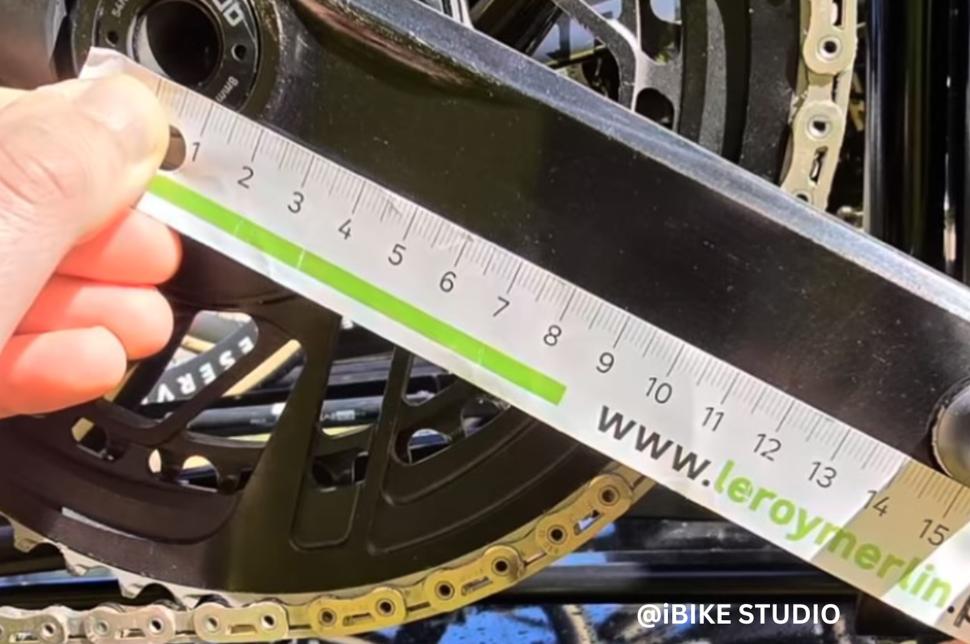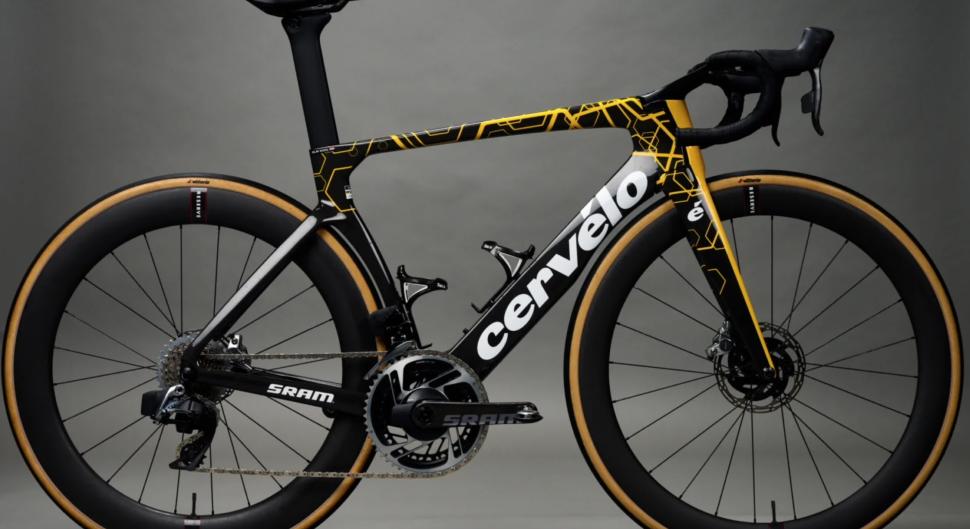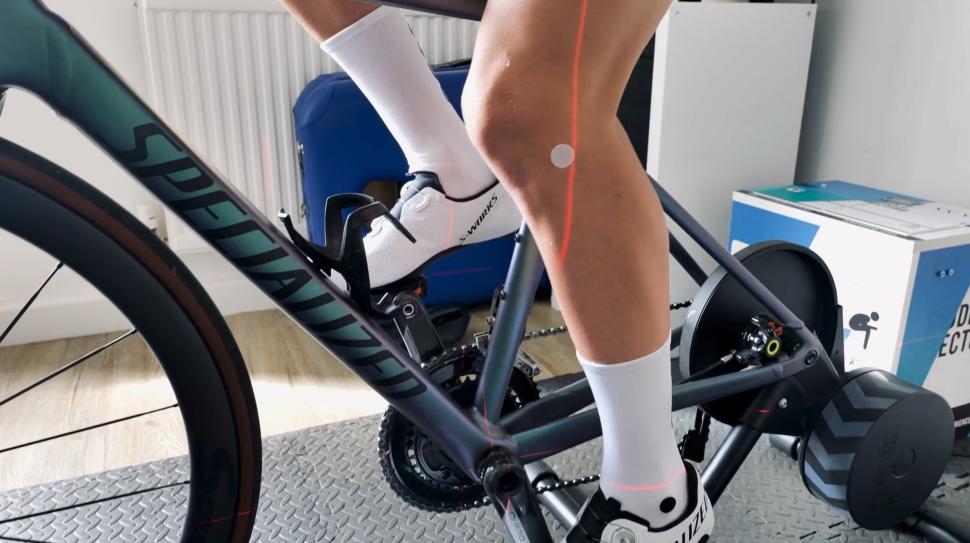- News
- Reviews
- Bikes
- Components
- Bar tape & grips
- Bottom brackets
- Brake & gear cables
- Brake & STI levers
- Brake pads & spares
- Brakes
- Cassettes & freewheels
- Chains
- Chainsets & chainrings
- Derailleurs - front
- Derailleurs - rear
- Forks
- Gear levers & shifters
- Groupsets
- Handlebars & extensions
- Headsets
- Hubs
- Inner tubes
- Pedals
- Quick releases & skewers
- Saddles
- Seatposts
- Stems
- Wheels
- Tyres
- Tubeless valves
- Accessories
- Accessories - misc
- Computer mounts
- Bags
- Bar ends
- Bike bags & cases
- Bottle cages
- Bottles
- Cameras
- Car racks
- Child seats
- Computers
- Glasses
- GPS units
- Helmets
- Lights - front
- Lights - rear
- Lights - sets
- Locks
- Mirrors
- Mudguards
- Racks
- Pumps & CO2 inflators
- Puncture kits
- Reflectives
- Smart watches
- Stands and racks
- Trailers
- Clothing
- Health, fitness and nutrition
- Tools and workshop
- Miscellaneous
- Buyers Guides
- Features
- Forum
- Recommends
- Podcast
TECH NEWS
 Vingegaard 150mm cranks @iBIKE STUDIO
Vingegaard 150mm cranks @iBIKE STUDIOJonas Vingegaard spotted riding ultra-short 150mm cranks at Volta ao Algarve
With riders in the pro peloton increasingly opting for shorter cranks, Jonas Vingegaard has taken this approach even further. At last week's Volta ao Algarve, new tech was on display as the Danish rider was spotted using unbranded 150mm cranks as he claimed his first overall victory of the season. Is this the future of the pro peloton?
For decades, the accepted wisdom in road cycling dictated that male riders of average height should use 170mm or 172.5mm cranks. However, in recent years, shorter crank lengths have gained traction, with bike fit experts recommended them for many riders for their potential benefits and many of the best road cyclists in the world are now opting for shorter cranks.
Reigning World Champion Tadej Pogačar made the switch to 165mm cranks for the 2024 season, with his team citing improved efficiency and a higher cadence as key benefits.
> The most common bike fit mistakes and how to avoid them
In 2025, shorter cranks have continued to be spotted in the pro peloton, with Wout van Aert and other Visma Lease a Bike riders spotted using 165 mm and 160 mm setups.
Now, CyclingSpy has shared an image from iBIKE STUDIO, a bike fit company, of Vingegaard riding 150mm cranks at the Volta ao Algarve, the shortest setup yet seen amongst top professionals. It didn’t appear to hinder his performance with Vingegaard winning the final stage time trial by 11 seconds over teammate Wout van Aert, and winning the general classification by finishing 15 seconds ahead of UAE Team Emirates’ João Almeida.
SRAM supplies Visma-Lease a Bike with groupsets, but their shortest commercially available road crankset is 160mm. It has been reported that Vingegaard's cranks were custom-modified, filed down, and repainted, hiding any branding and length details.
Shorter cranks are available from Rotor Aldhu (down to 150mm) and Jcob cranksets (as short as 145mm), but it remains to be seen whether Vingegaard’s setup will become a wider trend in the pro peloton.
Is this the future of the pro peloton?
More and more riders are opting for shorter cranks, with experts highlighting several potential benefits, including a more aerodynamic position, smoother and more comfortable pedalling, reduced lower back, hip, and knee strain, and even improved saddle comfort.
However, not all riders will benefit from such drastic reductions. Switching to shorter cranks typically requires a higher cadence to generate the same power. With less torque (leverage), riders must pedal faster to maintain their output. While many adapt well, some may struggle with the transition, making ultra-short cranks less suitable for certain riders or riding styles.
More tech
Vingegaard’s crank choice isn’t the only tech tweak at Visma-Lease a Bike. He was spotted using a trimmed visor on his Aerohead 2 TT helmet, as opposed to Van Aert’s full visor. This adjustment is believed to be in response to the UCI's ban on the Kask visor used by Ineos Grenadiers riders. Regulation 1.3.033 prohibits the use of 'non-essential' components that are not strictly for clothing or safety purposes.
The Visma riders were also seen sing a Tymewear breathing sensor to measure rate and tidal volume, which for some riders can also be a good indicator and even controller of fatigue.
Will more riders follow Vingegaard’s lead or is 150mm cranks too extreme for most? Let us know in the comments section below.
Emily is our track and road racing specialist, having represented Great Britain at the World and European Track Championships. With a National Title up her sleeve, Emily has just completed her Master’s in Sports Psychology at Loughborough University where she raced for Elite Development Team, Loughborough Lightning.
Emily is our go-to for all things training and when not riding or racing bikes, you can find her online shopping or booking flights…the rest of the office is now considering painting their nails to see if that’s the secret to going fast…
Latest Comments
- OldRidgeback 1 hour 9 min ago
The sentence does seem rather light. I hope the victim sues the driver heavily and wins a massive payout. The insurance firm would cover this but...
- OldRidgeback 1 hour 14 min ago
I bought my first MTB at Brixton Cycles decades ago and it's still in use as my hack. I've also bought bikes from there for my sons. I've had...
- chrisonabike 1 hour 38 min ago
So what you're saying is the "baseline" would move from "lit up like a Christmas tree" to "like a chameleon at a rave" * ... and it would have...
- Oldfatgit 2 hours 34 min ago
Thank you for asking Aidan, much appreciated....
- ktache 11 hours 33 min ago
And I liked endura too. Got a nice long sleeve mostly merino long sleeve a little while back, in orange.
- matthewn5 12 hours 1 min ago
No, the Ebay lights have been around for several years, this Lezyne light just appeared.
- chrisonabike 12 hours 17 min ago
They shouldn't worry - the second part of the "tariff" refrain is "they can make it in US and they'll do very well".
- Mr Blackbird 12 hours 49 min ago
"At the going down of the sun, it will get in our eyes and cause us to crash into things."
- chrisonabike 17 hours 53 min ago
Indeed - but again these are perhaps questions we should keep asking. Even if the immediate answer is "well we are where we are" or "how on earth...



Add new comment
6 comments
I would really like to try short cranks, but a bit lazy tbh.
Seems like they work really good for knees in pain.
Traction is the wrong metric here, shurely?
I went from 165mm to 155mm cranks this winter and my average power is up about 10 Watts and my average speed is up 1 mph on the indoor trainer. My cadence has gone up but it feels smoother and I'm less fatigued.
I am a shorter rider but I think the science is right and it would benefit anyone, give it a go!
a deliberate application of Cunningham's Law follows;
"surely the correct/ideal crankarm length can be calculated as being approximately equal to the distance between the [roational center of the tibeotalar joint] and the [first metatarsophalangeal joint]?"
I wanted to use 20/22t small chainrings and finding quality cranks was difficult (56/58 mm bcd). I ended up with a TA Zephyr triple but only available in 150 mm (youths) crank length. I usually use 170 mm, but to my surprise after a few days acclimatisation 150s felt very comfortable to the extent I also got Ritchey Logic 110/74 shortened to 150 for another bike.
I might have inadvertently been on-trend!
"This just in... anonymous pro racer bolts pedals directly to crank axle for 0mm crank length efficiencies." Kidding aside, I'm all about shorter crank lengths, but 150mm seems a bit extreme. I guess the race results will prove-out the theory.
Kidding aside, I'm all about shorter crank lengths, but 150mm seems a bit extreme. I guess the race results will prove-out the theory.